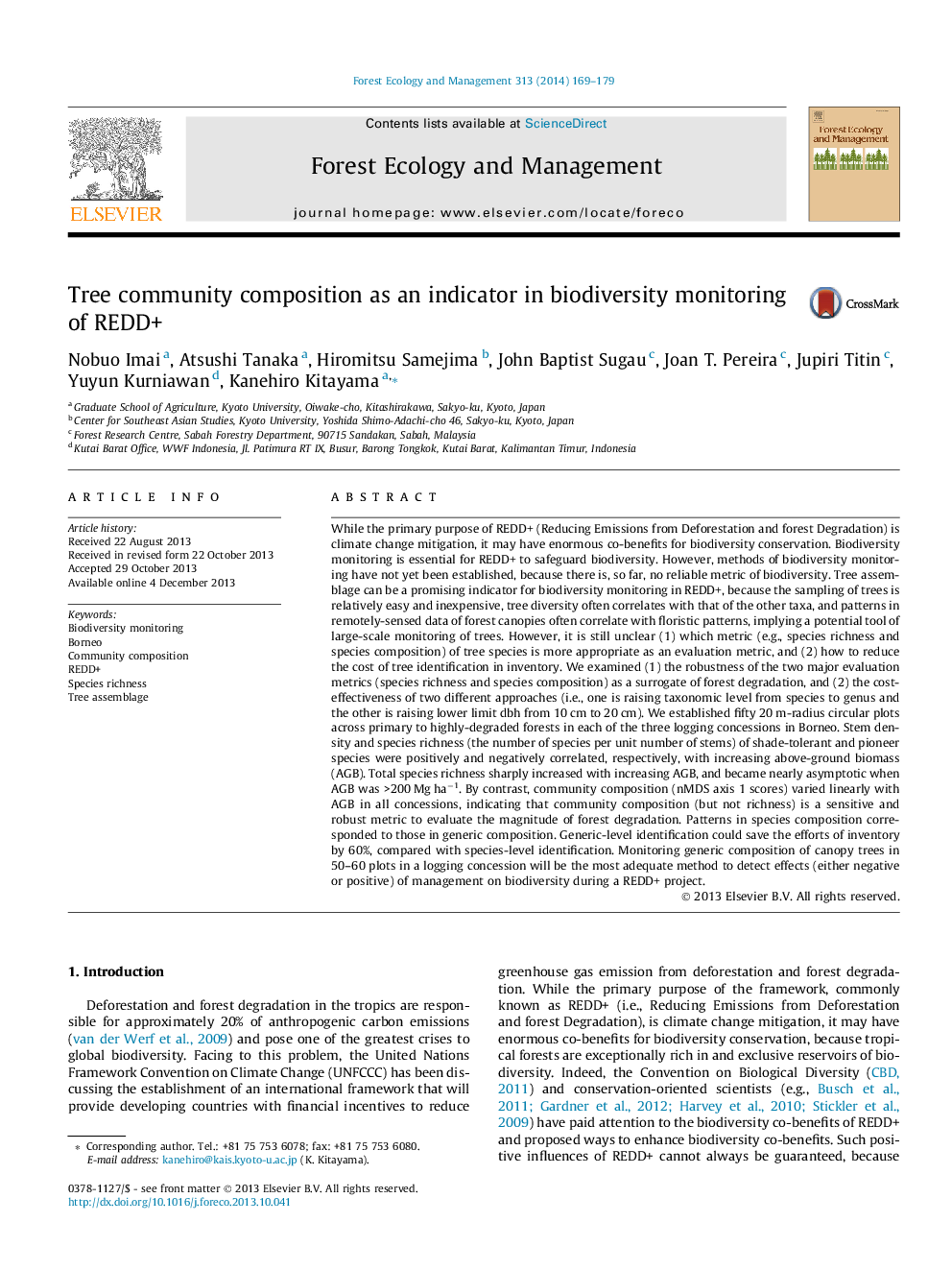| کد مقاله | کد نشریه | سال انتشار | مقاله انگلیسی | نسخه تمام متن |
|---|---|---|---|---|
| 86592 | 159199 | 2014 | 11 صفحه PDF | دانلود رایگان |

• We examined which metrics (species richness and composition) act as a proxy of forest degradation.
• We examined how to reduce the cost of tree identification.
• Community composition varied linearly with above-ground biomass.
• Patterns in generic composition corresponded to those in species composition.
• Tree generic composition can be an indicator in biodiversity monitoring of REDD+.
While the primary purpose of REDD+ (Reducing Emissions from Deforestation and forest Degradation) is climate change mitigation, it may have enormous co-benefits for biodiversity conservation. Biodiversity monitoring is essential for REDD+ to safeguard biodiversity. However, methods of biodiversity monitoring have not yet been established, because there is, so far, no reliable metric of biodiversity. Tree assemblage can be a promising indicator for biodiversity monitoring in REDD+, because the sampling of trees is relatively easy and inexpensive, tree diversity often correlates with that of the other taxa, and patterns in remotely-sensed data of forest canopies often correlate with floristic patterns, implying a potential tool of large-scale monitoring of trees. However, it is still unclear (1) which metric (e.g., species richness and species composition) of tree species is more appropriate as an evaluation metric, and (2) how to reduce the cost of tree identification in inventory. We examined (1) the robustness of the two major evaluation metrics (species richness and species composition) as a surrogate of forest degradation, and (2) the cost-effectiveness of two different approaches (i.e., one is raising taxonomic level from species to genus and the other is raising lower limit dbh from 10 cm to 20 cm). We established fifty 20 m-radius circular plots across primary to highly-degraded forests in each of the three logging concessions in Borneo. Stem density and species richness (the number of species per unit number of stems) of shade-tolerant and pioneer species were positively and negatively correlated, respectively, with increasing above-ground biomass (AGB). Total species richness sharply increased with increasing AGB, and became nearly asymptotic when AGB was >200 Mg ha−1. By contrast, community composition (nMDS axis 1 scores) varied linearly with AGB in all concessions, indicating that community composition (but not richness) is a sensitive and robust metric to evaluate the magnitude of forest degradation. Patterns in species composition corresponded to those in generic composition. Generic-level identification could save the efforts of inventory by 60%, compared with species-level identification. Monitoring generic composition of canopy trees in 50–60 plots in a logging concession will be the most adequate method to detect effects (either negative or positive) of management on biodiversity during a REDD+ project.
Journal: Forest Ecology and Management - Volume 313, 1 February 2014, Pages 169–179